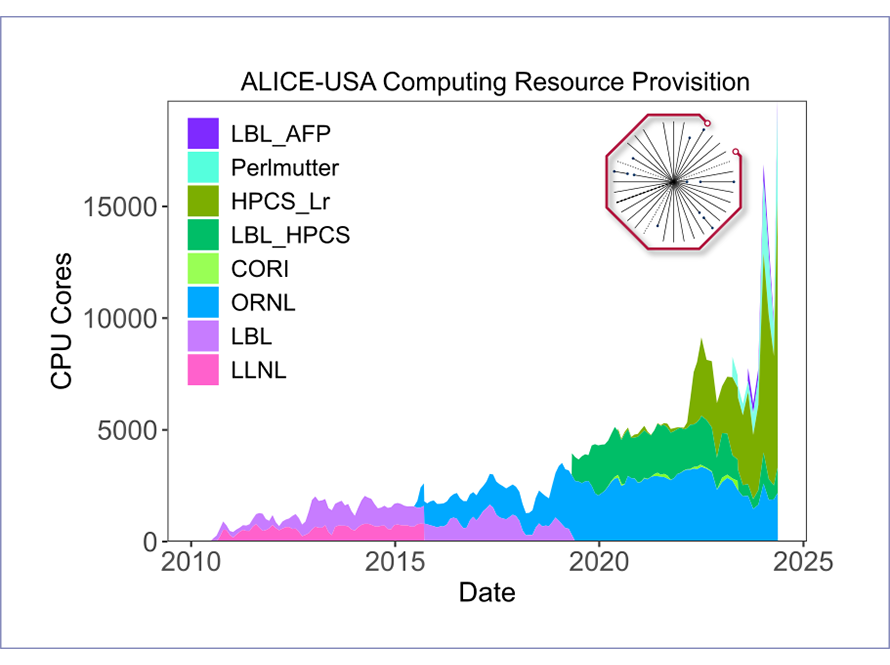 Analyzing the large amount of data accumulated by the STAR and ALICE detectors is a formidable challenge and RNC provides significant computing capabilities for both experiments. The ALICE-USA Computing project provides grid computing resources for the ALICE experiment. Data from the STAR detector is stored and processed at the LBL ITD Lawrencium cluster and at NERSC. NERSC supercomputer facility resources supplement both STAR and ALICE computing resources, and are used for R&D projects and embedding simulation campaigns for ALICE and STAR experiments respectively.
Analyzing the large amount of data accumulated by the STAR and ALICE detectors is a formidable challenge and RNC provides significant computing capabilities for both experiments. The ALICE-USA Computing project provides grid computing resources for the ALICE experiment. Data from the STAR detector is stored and processed at the LBL ITD Lawrencium cluster and at NERSC. NERSC supercomputer facility resources supplement both STAR and ALICE computing resources, and are used for R&D projects and embedding simulation campaigns for ALICE and STAR experiments respectively.
Grid technologies for highly distributed computing play a key role in efficient usage of these resources, as does the high capacity HPSS mass storage system at NERSC. As a result of the R&D work of the computing group, opportunistic use of large amounts of compute resources at the Lawrencium cluster became available for the ALICE grid. With the deployment of the new Perlmutter machine at NERSC we also leverage allocation of GPU resources for the ALICE group, which is vital for the emerging ML/AI based research.
Members of the RNC are also devising novel techniques for theoretical understanding and data analysis of physical phenomena at colliders (e.g. RHIC, LHC, EIC) using Machine Learning. The aim is to design and apply methodologies which are able to benefit from the complete information obtained in measurements (as opposed to traditional analyses of single observables and binned distributions) and divine from this human-understandable knowledge about QCD. With this approach the scientists are able to propose a new generation of measurements and/or advise new directions in theoretical approaches.
Concurrently to these efforts members of the RNC are interested and pursue directions that enable studies of QCD using quantum computing (QC). While the QC is in its early stages it is a rapidly developing subfield with transformative potential. Using quantum computers to simulate quantum processes may indeed overcome some shortcomings found in the classical techniques when calculating most interesting processes for the group (e.g. jet quenching).


